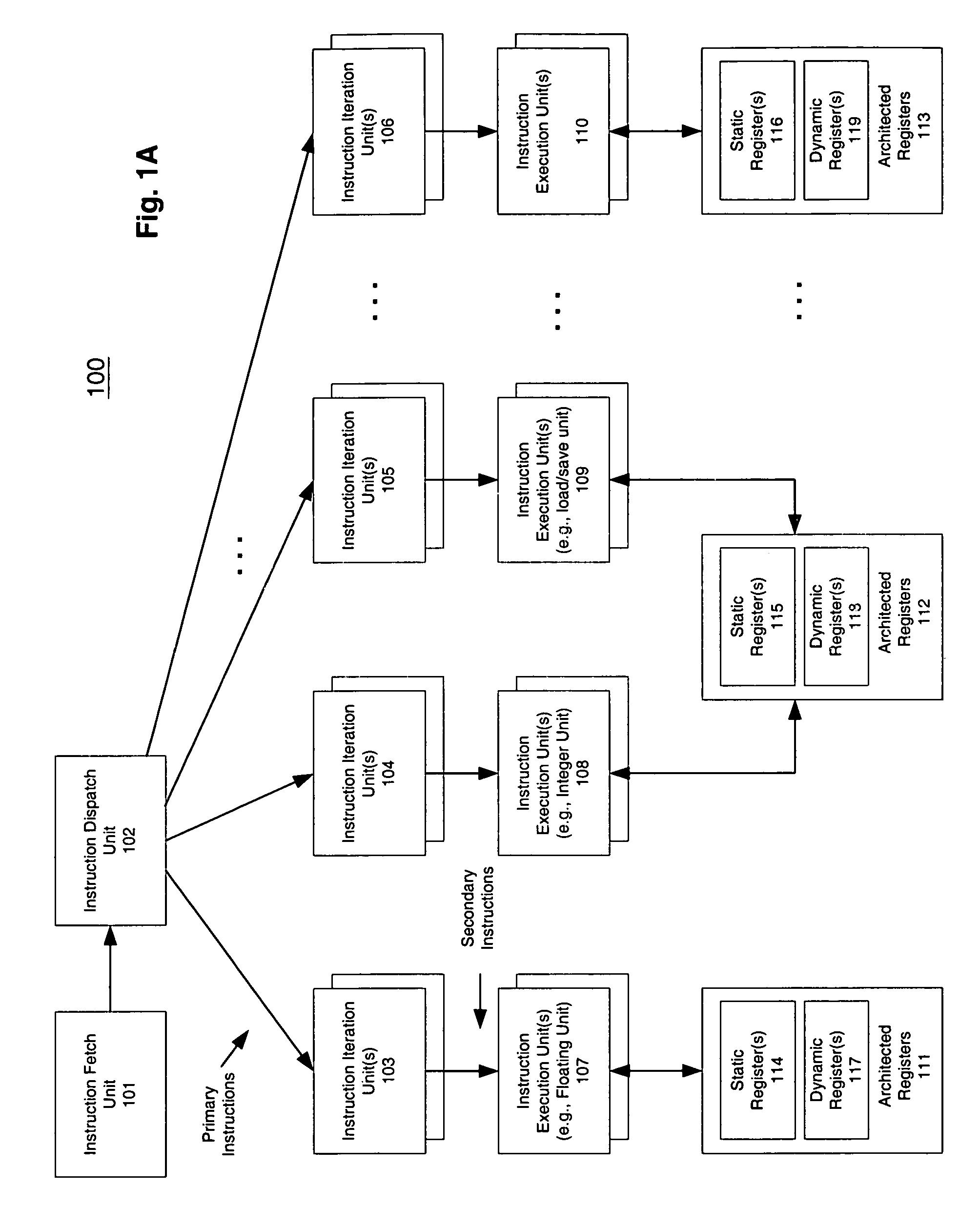Macroscalar processor architecture
a processor and macroscalar technology, applied in the field of processors, can solve problems such as power dissipation, affecting software compatibility, and most processors lack the requisite number of program registers, and achieve the effect of reducing the number of registers without compromising software compatibility
- Summary
- Abstract
- Description
- Claims
- Application Information
AI Technical Summary
Benefits of technology
Problems solved by technology
Method used
Image
Examples
Embodiment Construction
[0040]A macroscalar processor architecture is described herein. In one embodiment, instruction-level parallelism is generated at run-time, rather than scavenged, improving efficiency and performance while reducing power dissipation per task. The number of program registers is increased considerably, and over-specification of binary code for a specific processor is avoided, replaced by mechanisms which may ensure that software for prior versions of the processors automatically utilize additional execution resources in future versions. These enhancements also permit virtually substantially all inner loops to be aggregated to varying degrees, including those that cannot be unrolled by compilers, increasing IPC by maximizing utilization of multiple execution units.
[0041]In the following description, numerous details are set forth to provide a more thorough explanation of the present invention. It will be apparent, however, to one skilled in the art, that the present invention may be pra...
PUM
 Login to View More
Login to View More Abstract
Description
Claims
Application Information
 Login to View More
Login to View More - R&D
- Intellectual Property
- Life Sciences
- Materials
- Tech Scout
- Unparalleled Data Quality
- Higher Quality Content
- 60% Fewer Hallucinations
Browse by: Latest US Patents, China's latest patents, Technical Efficacy Thesaurus, Application Domain, Technology Topic, Popular Technical Reports.
© 2025 PatSnap. All rights reserved.Legal|Privacy policy|Modern Slavery Act Transparency Statement|Sitemap|About US| Contact US: help@patsnap.com



